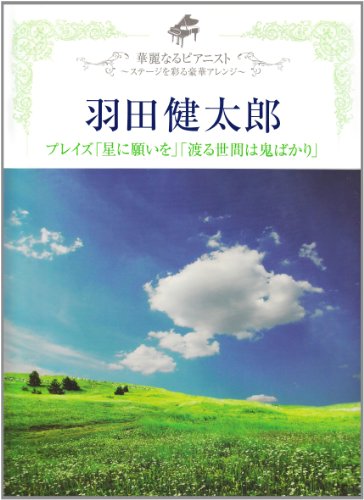- 著者
- 羽田 健三 市川 武彦
- 出版者
- 日本生態学会
- 雑誌
- 日本生態学会誌 (ISSN:00215007)
- 巻号頁・発行日
- vol.17, no.5, pp.182-189, 1967-10
- 被引用文献数
- 1
Continued from the previous report, this one deals with the percentage of works shared between the male and female, territory, predator, family life and reproductive rate, based on the results of outdoor observations for the purpose of studying the life history of the birds in the Zenkoji basin (altitude about 400m) in the northern part of Nagano Prefecture from 1963 to 1964. The main part of the observations was done in the Nagano district in the center of the basin, and most of the life history during the breeding season of the bird was described based upon the observation of one nest in 1964.
1 0 0 0 OA キジバトの生活史に関する研究
- 著者
- 羽田 健三 野沢 進之輔
- 出版者
- Yamashina Institute for Ornitology
- 雑誌
- 山階鳥類研究所研究報告 (ISSN:00440183)
- 巻号頁・発行日
- vol.5, no.5, pp.473-486, 1969-06-30 (Released:2008-11-10)
- 参考文献数
- 13
- 被引用文献数
- 4 3
1.長野県長野市信州大学教育学部構内で1967年に,キジバト(Streptopelia orientalis orientalis)の繁殖生活を観察した。2.巣造り期間は2~4日。♂は枯枝を嘴で折ったり,地上から拾ったりして巣材運搬のみに従事し,♀は巣場所でそれを受けとり,小枝を組み合わせて巣を造る。3.卵数は4巣において2卵で,1巣のみ1卵であった。抱卵は1卵産卵後から行ない,♀と♂が朝方と夕方2回交代し,♀は夕方から夜間を経て朝方まで平均17時間,♂は昼間の平均7時間続けてだく。抱卵日数は15~16日間であった。4.給餌は♀,♂とも行ない,親の口の中へ雛が嘴を入れ,親は首を上下にふりながら液状の餌を戻して口うつしをする。抱卵は育雛前,中期まで抱卵タイプでの♀♂交代が続き,抱雛しながら夫々の親が給餌する。このため前,中期ほど給餌回数が多く14~19回となり,後期は給餌だけに巣を訪れ1日3~4回である。巣立ちはふ化日から15~17日間である。5.次の繁殖は同じナワバリ内で巣場所をかえて行ない,抱卵期に入ると♂だけが前巣の雛に給餌する。6.キジバトのナワバリはMAYR(1935)の分類のB型に属する。7.繁殖諸仕事の♀♂分担は次のようである。抱卵,抱雛の割合の約70%は♀であり,給餌はその60%が♂である。ナワバリ防衛は90%以上を♂が受けもつ。
1 0 0 0 OA カワラヒワの生活史に関する研究
- 著者
- 羽田 健三 中村 浩志
- 出版者
- The Ornithological Society of Japan
- 雑誌
- 鳥 (ISSN:00409480)
- 巻号頁・発行日
- vol.20, no.88, pp.41-59, 1970-12-25 (Released:2008-12-24)
- 参考文献数
- 13
- 被引用文献数
- 5 3
1. This study of the breedingbiology of Japanese Greenfich Chloris sinica minor was conducted during March 1966 and August 1968, in an area of 660 ha of farmlands in Nagano prefecture, 400 m of altitude. 2. The study is based on breeding records of 262 nests, eleven all-day observations on breeding pairs and 824 marked individuals.3. The breeding procedure cousisted of five periods: preparatory-nest-building-egg-laying-incubation-chick-raising and famiy-life periods.4. Pair formation is advanced through the male's series of behaviors which are: courtship song-coutship posture to an attracted female-leading the female into a selected nest-tree-following after the female. After pair is formed the female selects the nest site.5. When the female fails to find the nest site within the male's territory, she would wander out of it for seardh of a good site, fllwed by the male. Therefore, the first territory is abandoned.6. Early in the breeding season, before middle April, they work for nest-building only in the morning and diappear in the afternoon to join the flock.7. The female only builds the nest and the male follows her closely.8. The nest-building period varies from about 14 days in the earlier part of the season, before 5 April, to as short as 4 days after entering May.9. This is due to the situation that in early season they feed on seeds left from the previous year and need time in foraging, their nest-building and egg-laying are prolonged. Later in the season, they can efficiently feed on rich source of new grass seeds and therefore finish neting in a short time and lay eggs at onde.10. The egg is usually laid one each day early in the morning. There were three exceptions (out of 68 caseg) in which eggs were laid in less than 24 hours.11. Day incubation is commenced after laying the first egg of clutch but true or night incubation sets in after the clutch has been completed.12. The female only incubates and is fed by the male. This feeding is usually (76.9%) performed at exposed places outside of the nest (The female may remain to be fed in the nest when she is conscious of observer) and never in the nest-tree. The feeding spots are concentrated along the territory border 20-40m from the nest and at least 8m it. Judging by the observer's personnal experience this has advantage to protect the nest from predator.13. The incubation period varied between 12 and 15 days but 40.6% were 12 days and 46.9 % 13 days.14. A clutch hatched in 1-3 days, with 89.4% in 2 days.15. Both sexes engaged in feeding the chicks and the frequency was 11 times a day This very low rate as compared with those in insect-eating passerines is due to the presence fo the crop in which the parents carry and chickc store the food.16. The chicks' growth of body weight slown in later stage and slightly decrease before nest-leavin, but the quills grow continuously. The tail is still short on flying.17. Teh feeding period of nestlings was 12-17, usually 14-15 (51.7%), days. After flying chicks were fed by both parents for 7-10 days and a few pairs commenced the second brood.
- 著者
- 羽田 健三 市川 武彦
- 出版者
- 一般社団法人 日本生態学会
- 雑誌
- 生態誌 (ISSN:00215007)
- 巻号頁・発行日
- vol.17, no.3, pp.93-100, 1967
- 被引用文献数
- 1
This report deals with nest building, copulation, egg-laying incubation, hatching, and chick-raising, based on the results of the outdoor observations for the purpose of studying the life history of the birds in the Zenkoji basin (altitude about 400m) in the northern part of Nagano Prefecture from 1963 to 1964. The main part of the observations was done in the Nagano district in the center of the basin, and most of the life history during the breeding season of the bird was described based upon the observation on one nest in 1964.
- 著者
- 羽田 健三
- 出版者
- 日本生態学会
- 雑誌
- 日本生態学会誌 (ISSN:00215007)
- 巻号頁・発行日
- vol.24, no.4, pp.p261-264, 1974-12
- 被引用文献数
- 1
1 0 0 0 OA オオヨシキリの生活史に関する研究 : I 繁殖生活
- 著者
- 羽田 健三 寺西 けさい
- 出版者
- 日本生態学会
- 雑誌
- 日本生態学会誌 (ISSN:00215007)
- 巻号頁・発行日
- vol.18, no.3, pp.100-109, 1968-06-01
- 被引用文献数
- 5
This report deals with migration, pair formation, nest building, egg laying, incubation, hatching, feeding, fledging and family stage of the Eastern Great Reed Warbler during 1965 to 1966 along the reed bed of the Chikuma River, Zenkoji basin, Nagano Prefecture.
1 0 0 0 羽田健太郎プレイズ「星に願いを」「渡る世間は鬼ばかり」
- 著者
- [編曲・採譜 羽田健太郎ほか]
- 出版者
- ヤマハミュージックメディア
- 巻号頁・発行日
- 2008
1 0 0 0 サルモネラSipCたん白質の機能解析とワクチン開発への応用
Salmonellaの上皮細胞侵入性は、本菌が感染を成立させるための重要なビルレンス形質の一つである。本研究では、トランスロケーターとしてのSipCの疎水性アミノ酸領域の機能発現に対する重要性を明らかにするとともに、変異型SipCを利用したワクチン開発の可能性について検討し、以下の結果を得た。1)S.Typhimurium sipC変異株に野生型SipCを発現するプラスミドまたはSipC疎水性アミノ酸領域を欠失した変異SipCを発現するプラスミドを形質転換すると、野生型SipCではビルレンス形質を回復したが、変異SipCではビルレンス形質を回復することができなかった。2)疎水性アミノ酸領域での溶血活性に関与する機能的なアミノ酸を、PCRを用いたランダム変異導入法によって分離同定し、得られた点変異型SipC-S165Pを用いて、ビルレンス形質への影響を明らかにしたところ、Sipc-Sl65Pは、sipC変異株のビルレンス形質を回復できなかった。3)精製したSipC-Sl65P-FLAGを、HeLa細胞の培養液中に加え、共焦点顕微鏡で観察したところ、SipC-S165P-FLAGの細胞膜への挿入まみられなかった。次に、pFLAG-sipCおよびpFALG-sipC-S165Pを発現するSalmonella野生株を、Hela細胞に感染させ、宿主細胞内に挿入されたsipCの局在を調べた結果、sipc-FLAGは、細胞膜画分に局在するのに対して、sipC-s165P-FLAGの膜画分への局在はみられなかった。4)ストレプトマイシン処理マウス(C57BL/6,♀,8週齢)を用いて、各変異のSipC機能への影響をin vivoで検討した結果、野生型SipCを相補したsipC変異株のみ、野生株と同様に盲腸粘膜での炎症反応が惹起された。以上のことから、SipCの疎水性アミノ酸領域はSipCの機能発現に重要であり、また、165番目のセリンは、SipCが宿主細胞膜へ挿入するために必要なアミノ酸であることを明らかにした。現在、ストレプトマイシン処理マウスを用いた感染モデルを用いて、Sipc-S165Pがワクチン成分として感染防御機能を持つかどうか検討中である。

